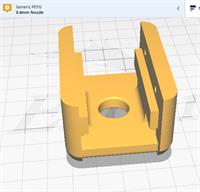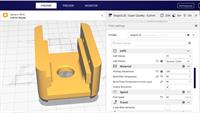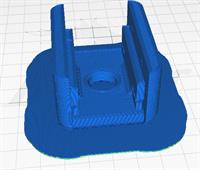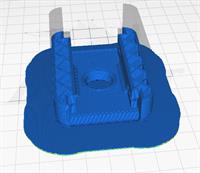3D Printing for R/C - April 2020
At the time I built my CNC Router I looked at 3D printers and resisted buying one due to the price, printer reliability and durability of the printed parts.
Times have changed and prices have dropped dramatically. Reliable low-cost printers can be purchased now and a wide range of filament materials can be used to print high strength parts. These include carbon fibre reinforced filament, ABS, ASA Nylon and PolyCarbonate.
I recently purchased a Creality Ender 3 Pro 3D printer to print model parts and for other items around the home.
I watched 3D printing videos by Michael at Teaching Tech, Angus at Maker's Muse and Chuck at Chep. These videos helped me to set up my printer, make recommended printer modifications and contained lots of tips for printing with different types of filament. Some of the issues that were a problem in the past have been quickly addressed by the Creality factory to improve the quality of their product.
The printer comes as a kit with good instructions and is easily assembled in under 3 hours. One of the problems I initially had was that the belt tension on the X-axis was too loose. This caused out-of-round prints. Tightening the belt quickly fixed the problem.
The process of creating a part involves first designing the part with 3D software. The software I use for designing the 3D Models is AutoDesk Fusion 360. You can obtain a free hobbyist licence to use this software. This took some time to get familiar with but once I got the hang of it I was able to create new designs fairly easily. A number of YouTube videos helped especially ones from Stefan at CNC Kitchen.
After designing the part in Fusion 360, the design is exported as a 3D model in STL format.
The next step is to slice the model to convert it to G-Code so that the 3D printer can print the part.
The slicing software I use is Ultimaker Cura. The STL file is imported then sliced. The slicing profiles I used to get high-quality prints were obtained from Chuck. The slicer generates the G-Code file which is then copied to the Micro SD card then inserted into the 3D printer for printing.
Items I have printed in PLA filament
- motor mounts
- parts for my 3D Printer
I have also printed the following using PolyLite PETG filament
- robot vacuum cleaner wheels
- brackets for wing jig
I did have some initial problems getting the PETG filament to stick to the glass bed when printing a design that had supports.
Supports are required when printing parts that have overhangs or any kind of bridging. The supports are designed to be easily removed after printing. The solution that I found was to use a UHU glue stick on the glass bed to help the filament stick and to print a raft before the main print starts to ensure that there was a good foundation for the filament supports to stick to. I use the same bed leveling settings as for the PLA filament, paper sheet thickness between the nozzle and the bed.
Settings I use for PETG are
- Temperature 230 Celsius
- Build Plate 80 Celsius
- Print Speed 45 mm/sec
- Fan Speed 100 %
- Build Plate Adhesion Raft
- CHEP Cura Profile Magic0.20
Future projects include tail wheel mount, refined wing jig brackets and moulds for wheel pants.
Ramy creates moulds for scale airliner parts using PLA filament. His uses carbon fibre to make fuselage, engine nacelles and various other components.
Below is a short video of my printer printing a motor mount in PLA for my Gee Bee R2 profile model.
No Comments
Date Posted: 3/04/2020 10:42:00 PM
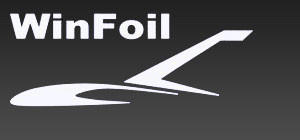
Winfoil 3 Other Details
User Portal
Articles
- 2FA
- 3.0.49
- 3.0.51
- 3.0.52
- 3.0.53
- 3D Printing
- 3D Printing for RC Aircraft
- About
- Activation Enhancement
- Airfoil List Screen Enhancement
- Airfoil List Screen Enhancements 2
- Airfoil Plotter
- Airfoil Plotting
- Airfoils
- Airfoils not showing after import
- April 2020
- APRIL 2021
- August 2020
- CNC
- CNC Router
- Creality
- Decals
- Default Length Units
- Design Specification
- Download Winfoil
- DXF Export Enhancement
- End Mills
- Ender 3 Pro
- FEBRUARY 2021
- Issue
- JANUARY 2024
- Jig Hole Washout
- July 2020
- June 2020
- Lost Password Link Issue
- March 2020
- MARCH 2024
- MAY 2020
- October 2020
- Print Orientation Issue
- Roadmap
- Show Password
- Two-factor Authentication
- V3.0.45
- V3.0.52
- V3.0.53 APRIL 2021
- V3.0.55
- V3.0.56
- V3.0.57
- Version History
- Washout
- Weight and Balance
- Winfoil V3.0.51
- Winfoil V3.0.52 MARCH 2021
- Wing Plan View

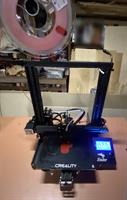
.jpg)
.jpg)
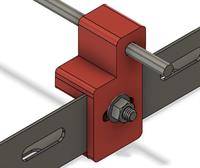
.jpg)
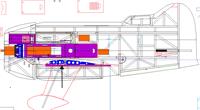
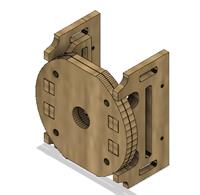
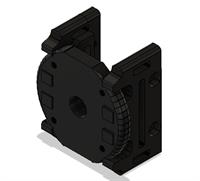
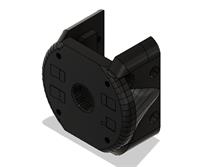
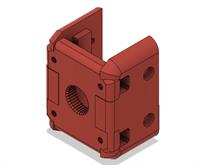
.jpg)
